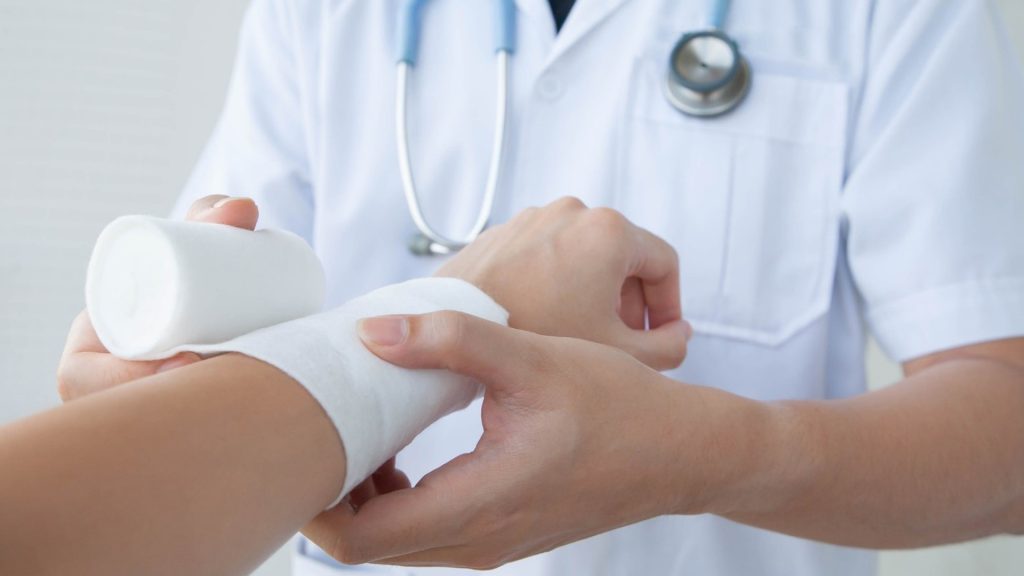A skin burn is an injury that occurs when the skin is exposed to excessive heat, chemicals, electricity, radiation, or friction. Burns can range in severity from mild to severe, affecting different layers of the skin and underlying tissues. Regardless of the burn’s severity, seeking medical attention and consulting a dermatologist is important for proper evaluation and treatment.
When it comes to treating skin burns, the approach depends on the severity of the burn. Burns are generally categorized into three degrees: first-degree, second-degree, and third-degree burns.
First degree burns
First-degree burns are considered mild and only affect the outermost layer of the skin, known as the epidermis. They typically result in redness, pain, and minor swelling. Treatment for first-degree burns includes:
- Cooling the burn: Immediately after the burn occurs, it is crucial to cool the affected area with cool (not cold) water or by applying cold compresses. This helps alleviate pain and prevents the burn from worsening.
- Applying aloe vera or moisturizing lotion: These substances can soothe the burn and promote healing of the damaged skin.
- Seeing a dermatologist: While first-degree burns can often be treated at home, it may still be advisable to see a Skin doctor in Karachi for proper assessment and guidance on care, especially if the burn covers a large area or is on the face, hands, feet, or genitals.
Second degree burns
Second-degree burns are more severe and extend beyond the outermost layer of the skin, affecting the underlying dermis. They are characterized by blistering, intense pain, redness, swelling, and sometimes a weeping or wet appearance. Treatment for second-degree burns includes:
- Seeking medical attention: It is essential to see a dermatologist or a healthcare professional for evaluation and proper management of second-degree burns. They can assess the extent and depth of the burn and determine the most appropriate treatment plan.
- Cooling the burn: Similar to first-degree burns, immediate cooling of the burn with cool water or cold compresses is crucial to alleviate pain and minimize further damage.
- Cleaning and dressing the burn: Cleaning the burn with mild soap and water and applying a sterile, non-stick dressing helps prevent infection and promotes healing. A dermatologist can provide guidance on proper wound care techniques.
- Medications and specialized treatments: Dermatologists may prescribe topical ointments or creams containing antibiotics to prevent infection. They may also recommend specific burn creams or advanced wound care methods based on the individual’s needs.
Third degree burns
Third-degree burns are the most severe and affect all layers of the skin, potentially damaging deeper tissues such as nerves, blood vessels, muscles, and bones. Third-degree burns require immediate medical attention and treatment. The role of a dermatologist in the management of third-degree burns includes:
- Emergency care and stabilization: Third-degree burns are critical injuries that often require immediate attention from medical professionals. Dermatologists can provide initial emergency care to stabilize the patient and ensure their vital functions, such as airway, breathing, and circulation, are supported.
- Coordinating multidisciplinary care: Dermatologists work closely with other healthcare providers, such as plastic surgeons and burn specialists, to develop a comprehensive treatment plan for third-degree burns. They play a crucial role in coordinating and integrating care throughout the healing process.
- Surgical interventions and skin grafting: In severe cases, dermatologists may perform surgical procedures, including skin grafting, where healthy skin is transplanted from one area of the body to the burn site. Dermatologists are skilled in these procedures and can contribute to restoring the functionality and aesthetics of the affected area.
- Long-term scar management: Dermatologists are well-versed in managing and minimizing the formation of scars resulting from severe burns. They employ various techniques, such as scar massage, silicone gel sheets, corticosteroid injections, laser therapy, or surgical interventions, to improve the appearance and function of the burn scars.
Conclusion
In summary, when it comes to treating skin burns, the severity and complexity of the burn often determine whether it is appropriate to seek the expertise of a dermatologist. While mild burns can often be managed at home, it is advisable to consult a Dermatologist in Lahore for proper evaluation and guidance.
For moderate to severe burns, seeking immediate medical attention and involving a dermatologist in the treatment process is crucial for optimal care and outcomes. Dermatologists bring their specialized knowledge and skills to assess, manage, and facilitate the healing of skin burns, ensuring the best possible recovery for the patient.







